#Li Chung Lin
Photo


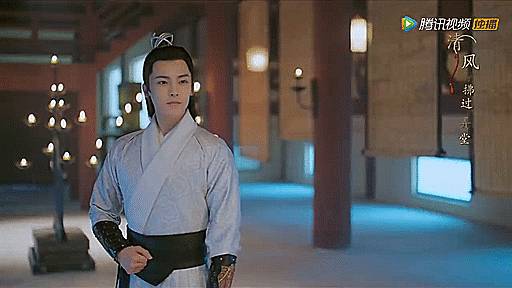


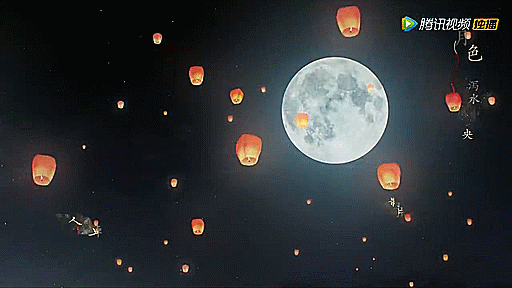

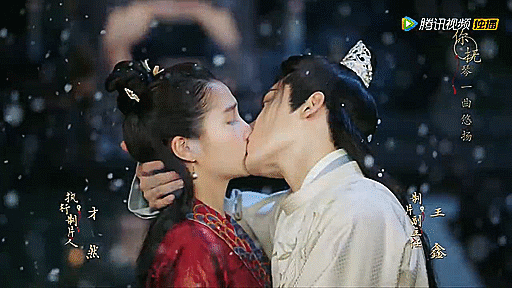


Cdrama: A Girl Like Me (2021)
Gifs of Intro of cdrama “A Girl Like Me”
ENG SUB 【我就是这般女子 A Girl Like Me】 EP01 班婳初遇容瑕,一见倾心(关晓彤、侯明昊)
Watch this video on Youtube: https://www.youtube.com/watch?v=ZFA9HkX9yoE&vl=zh




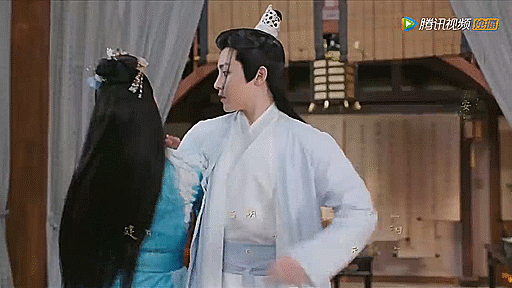
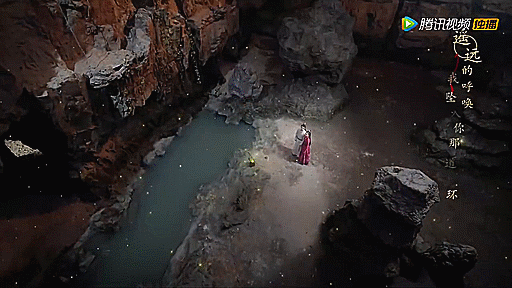

#A Girl Like Me#我就是这般女子#Wo Jiu Shi Zhe Ban Nu Zi#2021#Tencent#Guan Xiao Tong#Traey Miley#Hou Ming Hao#Neo Hou#Xiao Hou Zi#Zhao Shun Ran#Li Chung Lin#Li Zhong Lin#An Yong Chang#Xia Nan#cdrama#chinese drama#WeTV#youtube#episode 1
14 notes
·
View notes
Text

The Sword and the Brocade. 7
Story: 8
Acting: 10
Chemistry: 10
Comparable to: the General’s Lady (cdrama) , New Life Begins (cdrama)
Another name for the series could be the cat’ty concubines. Seriously. The entire series is made up of a man the marquis (played by Wallace Chung) who has a lot of concubines that try to outdo one another in all different sinister ways. It also has a. hateful terrible mother who was the one who picked the concubines in the first place who who apparently we are supposed to sympathize with?. For me it takes a handful episodes to get into, but then it becomes fun and enjoyable where you root for the good side watching everything unfold. Yes it might be predictable and cliche but it’s entertaining as heck. Unfortunately it doesn’t last long and towards the last ten episodes it falls of the rails again and becomes meh. Still would recommend it though for a watch just keep the fast forward button handy.
#the sword and the brocade#cdrama#viki#wallace chung#tan song yun#he hong Shan#tang xiao tian#Wu mian#li sheng#lan xi#peng yang#charry qi#li lin fei#li zhao#ding jie#luo ze Kai#an tai#historical#romantic drama#melodrama#revenge#comedy#marriage contract#sligh love triangle#slow burn#mystery
4 notes
·
View notes
Text
TTEOTM Creative Team: What else did they work on?
For those who are a bit underwhelmed by the summer drama options or still dreaming about TTEOTM! 😎
Kuk Kok Leung (Lead Director)

Kuk Kok Leung is a veteran director who started his career in Hong Kong's TVB. He's been nominated for the prestigious Magnolia Award and is known for wuxia and serious, warm-blooded historical dramas (he's adapted 7 out of 8 Jinyong novels). His works include...
Legend of the Condor Heroes (1983) as Assistant Director, with Felix Wong and Barbara Yung
The Duke of Mount Deer (1984), with Tony Leung & Andy Lau
Return of the Condor Heros (1983) with Andy Lau & Idy Chan
Legend of the Condor Heroes (2002) with Li Yapeng & Zhou Xun
Demi-Gods and Semi-Devils (2003), with Hu Jun, Jimmy Lin, and Liu Yifei
Water Margin (2011), nominated for Magnolia Award
Cool Sword (2013), with Julian Cheung & Wallace Chung
The Patriot Fei Yue (2013), with Huang Xiaoming & Ruby Lin
The Stand-In (2014), with Wallace Chung
The General and I (2016), with Wallace Chung and Angelababy
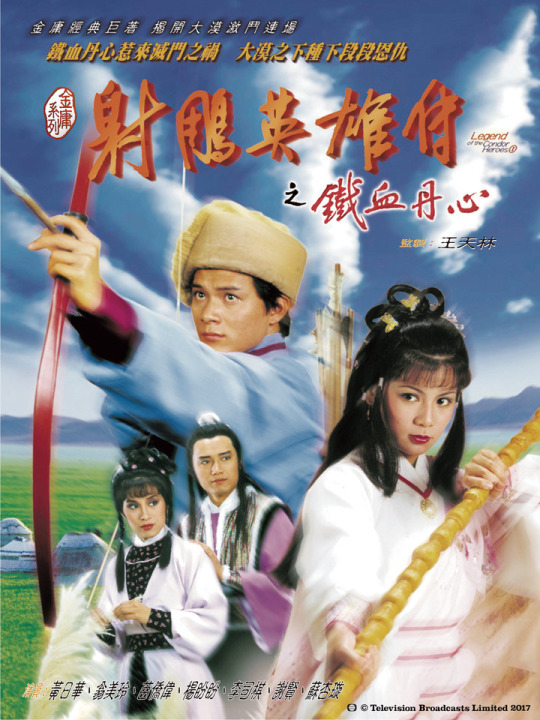



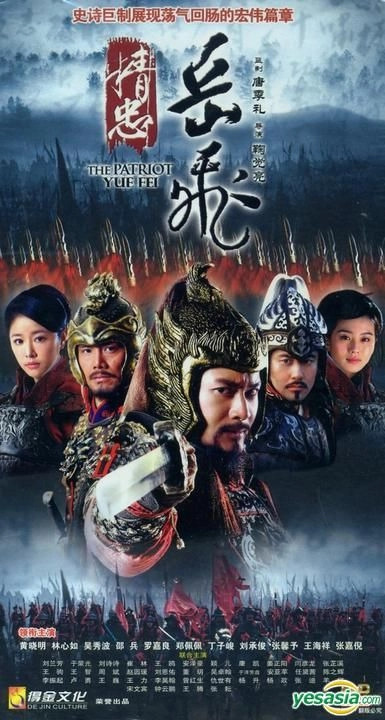

He's also a frequent collaborator and producer on Johnny To films, including Election, Election 2, Mad Detective.
So you get the picture. He makes TV for men who are ready to bleed for their country. This all makes him a really interesting choice for TTEOTM (and tells you a bit about the ambition and creative vision of the producers), especially since all his more recent idol dramas were widely panned.
Wang Haiqi, Director & Action Director

We don't know too much about Wang Haiqi because TTEOTM is actually his directorial debut. He started his career in stunts and has worked as the action coordinator on Ashes of Love (2018) and Immortality (unreleased) alongside Luo Yunxi. He was also a stunts man/double in a bunch of Hollywood films, including Mulan (2020) and the Foreigner (2017) through the Jacky Chan stunts team.

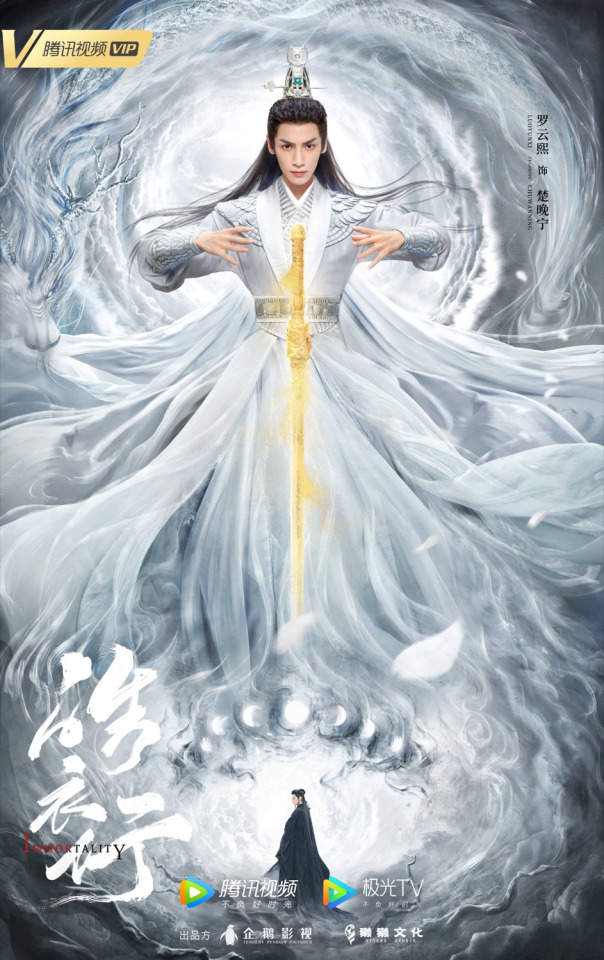
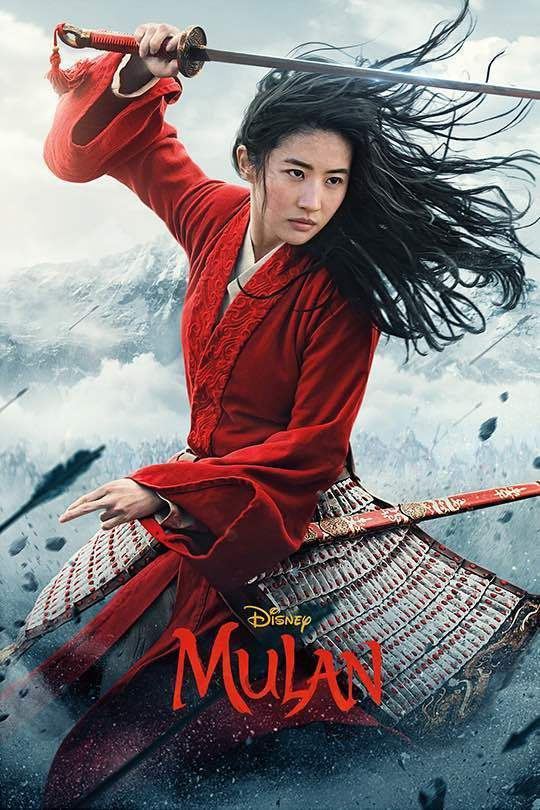

He's responsible for most of the action/battle scenes in TTEOTM, and his experience working on films probably explains why the fight sequences are unusually cinematic for TV.
Luan Hexin, Art Director
Luan Hexin is a Magnolia Award nominated art director best known for Huanyu productions, including Story of Yanxi Palace, Winter Begonia, and Royal Feast. He's a serious art guy, as you can tell from this interview.
(Note: Huanyu is Bai Lu's management company. There is a rumor that Luan Hexin is part of Bai Lu's "dowry", but the parties have since clarified that Luan was brought in after she was cast.)
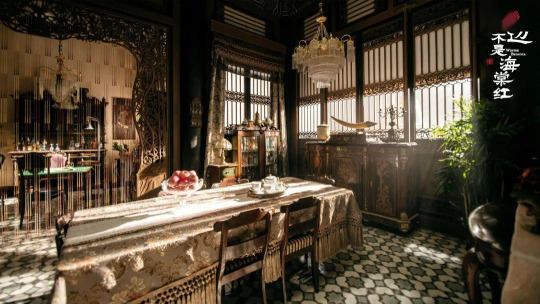
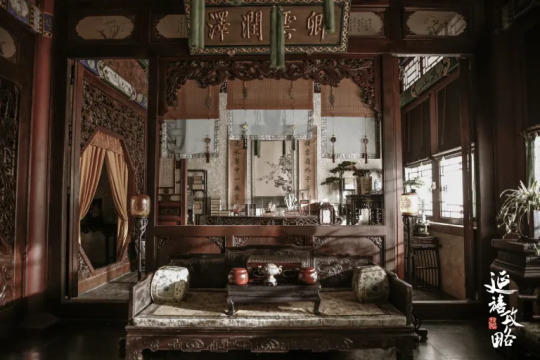
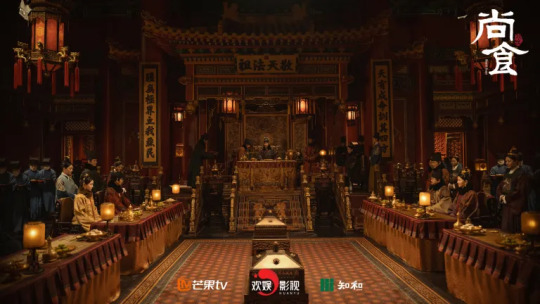
He's also an interesting choice, having never worked on costume fantasies before and better known for his authentic representation of the look and feel of bygone eras.
Huang Wei, Costume Designer
Huang Wei is one of the most sought-after costume designers working today, especially for xianxias. She started her career as a Vogue China editor and was in fact the person responsible for TTEOTM's Dunhuang-inspired aesthetics.
Her better known works include A Dream of Splendor (2022), One and Only (2020), Love O2O (2015), Back from the Brink (2023) as well as a bunch of highly anticipated dramas like Immortality and The Last Immortal. (The joke on Chinese internet is that there is an "expensive" vs. "cheap" version of Huang Wei costumes - her design can be much simpler on lower-budget productions.)


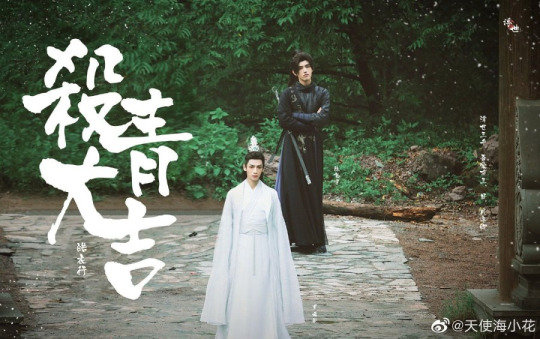
I'd like to think that after designing 40 mostly white costumes for Luo Yunxi in Immortality, she decided to go nuts on color with Tantai Jin.
Tsang Ming Fai, Makeup Designer
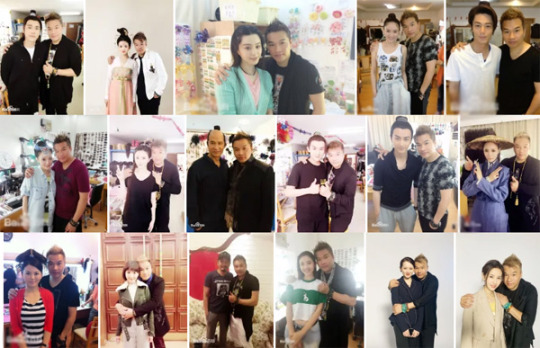
Tsang Ming Fai is a big name in the xianxia circuit. He and his team of “students" have worked on a large number of costume dramas, including Ashes of Love (2018), Love & Redemption (2020), Under the Power (2019), Noble Aspirations (2016), Sword of Legends (2014), as well as the... wait for it... unreleased Immortality and Luo Yunxi's currently filming drama Follow Your Heart.
He's sadly been receiving a lot of hate in fan circles over the heavy makeup in TTEOTM (which may or may not have been his call). What I do appreciate is his ability to help actors craft distinct characters with varied hair and makeup choices. For example you can distinguish between different Luo Yunxi characters and their personalities with Runyu's clean cut tie-back half ponytail (ethereal & straight laced), Tantai Jin's slightly brown hair, messy bangs and heavy eye shadow (dark & sickly), Chu Wanning's angular eyebrows and geometric hair puff (strict & proud).

He also excels at creating unusual, iconic looks even for side characters, e.g. Chen Yao's dark lipstick paired with gothic jewelry in Immortality and Chen Duling's retro updo in TTEOTM.
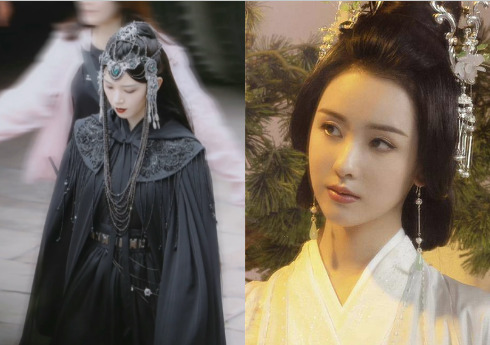
#till the end of the moon#black moonlight holds the be script#luo yunxi#cdrama#chang yue jin ming#chinese drama#tteotm#bai lu#tantai jin#ye xiwu#huanyu#yanxi palace#ashes of love#immortality#2ha#winter begonia
78 notes
·
View notes
Text
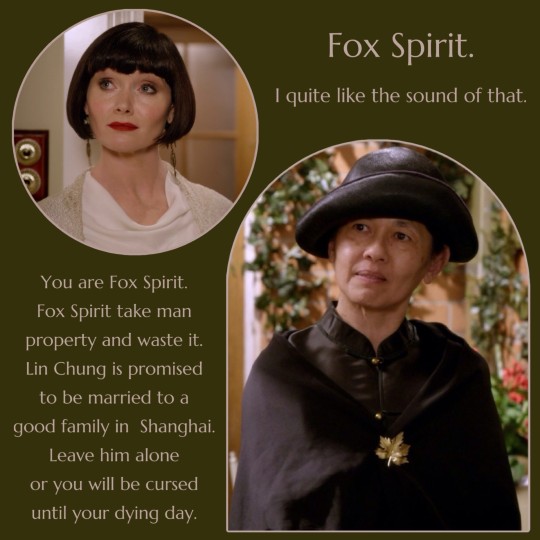
Miss Fisher Snippets (180)
After her precious grandson ignored her warning and accepted a private dinner invitation from the floozy, Grandma Lin decided to take a more drastic measure by paying her a personal visit. Little did she know that Phryne Fisher was not one easily offended by name calling or scared off by the talk of curses, so this visit was essentially wasted.
A couple of random thoughts. The Mandarin pronunciation of Fox Spirit is Hu-li-jing (狐狸精), which actually kind of resembles “floozy”. Also, Grandma Lin said that Lin Chung was promised to be married to a good “family” in Shanghai, not a good “girl”. I could imagine how furious she must have been later with the Hu family when she found out that her granddaughter-in-law-to-be was not the good girl she assumed her to be.
(Posted 24-Feb-2024)
19 notes
·
View notes
Text
First Squad Differences From Canon
(CW: trauma and PTSD mention)
Lin Chung
-autistic (though that might as well be canon)
-PTSD (this takes place after Twin Master’s defeat, and he’s gotten help)
-Bi (no specific preference)
-Part melanistic leopard (long story but it has to do with his ancestor Lin Chong)
-Married to Mighty Ray (rupphire, lumity, roger and Jessica rabbit dynamic)
-Canonically 6’5 (husband is 5’1 lol)
-learns some new abilities related to his kitty side, better air control, “lightning” eyes, slight plant manipulation using harmonic energy, temp floating
Mighty Ray
-ADHD
-ftm bi (with male preference)
-has a lot of hidden insecurities that he’s gotten both professional help and encouragement from hubby for
-can manipulate fire and electricity through his body (mainly his fists) and has learned to harness the harmonic energy
-has been friends with Kowloon and Alpha Girl since they were kids (their dynamic is kinda like amity with her siblings since he’s the youngest, he’s their little cringe idiot)
Mystique Sonia
-ADHD
-bi (male preference)
-married to Mano
-has trauma from her home life that she’s been working through
-from a rich family that ended up investing in this world’s version of crypto island, where Sonia and her four sisters grew up
-still loves yaksha (who is one body that shares two souls), who accepted Mano while also making sure the guy knew that Yaksha would fuck him up if he broke Sonia’s heart
Jumpy Ghostface
-joined Big Green when he was 15 (didn’t tell the others at first and by the time he did it was too late)
-baby who also wants to be taken seriously
-autism + ADHD
-ace het
-gains access to transformation candies that allow him to turn into others but not use their abilities
Mr. No Hands/Li Shen
-oldest of the team
-family friend of Ray’s family
-doesn’t have the tickle curse, it’s been replaced by a choking curse
-PTSD from previous war experiences, which is when he got his curse
-gains some earth, levitation, defense, and healing powers by using a book to activate them or with little slips of paper (think glyphs from The Owl House)
-Married to Lady Green (who’s around his age with a teenage daughter from a previous relationship)
7 notes
·
View notes
Text
youtube
Lots of tasty playing in this one from the TPO Big Band 踢霹歐爵士大樂團 =D
Composer: 楊三郎
Arranger: 謝智揚
Featured Artist: 劉士瑜 Shih Yu Liu on the 中國笛 Chinese Bamboo Flute
Woodwinds:
高杰 J Geddes - Alto Sax, Bass Clarinet
李哲安 Che An Li - Alto Sax
段承洋 Cloony - Tenor Sax, Flute
林秉宏 (阿強) Art Chang - Tenor Sax, Flute
譚文雅 Wenya Tan - Baritone Sax
Horns:
丹尼 Danny Deysher
Yannick Barman Solo Trumpet/Electronics
羅丹 Luo Dan
何政融 2MAO
Trombones:
林庭揚 Brandon Lin
王翊丞 Yih Cheng Wang
賴奕如 Momo
王則旻 Che Min Wang (Bass Trombone)
陳健勛 Chris (Cimbasso)
Piano: 傅麥特 Matthew Fullen
Guitar: Ben Holt *Solo
Vibraphone: 周嘉慧 ChiaHui Chou
Double Bass: 林克安 Derrick Lin
Drums: 詹無季 Baron Jan
Percussion: 鄭嘉富 Cheng Chia Fu
Recorded by Andy Baker at 玉成戲院錄音室 YuChen Cinema Studio. More a/v credits back at YT.
‘Created in May 2020, TPO is an international group of professional musicians that brings the spirit and sound of vintage American jazz into 21st century Taipei.’ Founded/directed by 高杰伊 Jim Geddes.
Links: TPO YouTube, TPO Instagram
I think this is choral arrangement of the same 楊三郎 composition, with lyrics by 呂傳梓, arranged by 蔡昱姍, recorded in Austin, Texas back in 2013 by the 奧斯汀龍吟合唱團 (Austin Chinese Choir):
youtube
You mostly hear the similarity in that lovely opening/recurring melody.
Conductor: Chung-Hwa Chen
Piano Accompanist: Eric Wei 魏嘉翔
Lyrics and English translation back at YT.
#TPO Big Band 踢霹歐爵士大樂團#T.P.O. Band 踢霹歐樂團#tpotaipei#玉成戲院錄音室 YuChen Cinema Studio#劉士瑜 Shih Yu Liu#奧斯汀龍吟合唱團 (Austin Chinese Choir)#AustinChineseChoir#taiwan#Austin#music video#Youtube
2 notes
·
View notes
Photo

Calamity of Snakes will be released on Blu-ray and DVD on April 11 via Unearthed Films. The 1982 Taiwanese/Hong Kong exploitation film is also known as The Serpent Warriors.
Chi Chang directs from a script he co-wrote with Kang-Nien Li and Kuo Jung Tsai (Crouching Tiger, Hidden Dragon). Yun-Peng Hsiang, Yuen Kao, and Ping-Ou Wei star.
Three versions of the film are included: the original cut, an alternate cut, and a cruelty-free version with the real animal deaths removed. Special features are listed below.
Special features:
Original cut
Alternate cut
Cruelty-free cut
Audio commentary by film historians Nathan Hamilton and Brad Slaton
Lin Kuang-Yung In Conversation with Chui-Yi Chung
From Shaw to Snakes: The Venom and Violence of Early Chinese Language Horror Cinema - Feature-length documentary
After a businessman kills thousands of snakes in a pit while they are building a new apartment building. The people living there soon become attacked by millions of snakes with a vengeance.
Pre-order Calamity of Snakes.
#calamity of snakes#hong kong#taiwan#80s movies#1980s movies#exploitation#the serpent warriors#unearthed films#dvd#gift#chi chang#crouching tiger hidden dragon#creature feature
12 notes
·
View notes
Note
HI!!!! can i please get slightly older siblings (by a couple years for both male and female!!) for edison song? if it isn't too much trouble? thank you in advance!!!!!!!! <3
Esther Huang (1989) Taiwanese.
Eugenie Liu (1990) Taiwanese.
Guo Shu Yao (1990) Taiwanese.
Beatrice Fang (1990) Taiwanese.
Jen Van Epps (1990) African-American / Taiwanese - half-sibling!
Nita Xia (1990) Taiwanese.
Wes Lo (1990) Taiwanese.
Ben Wu (1991) Taiwanese.
Giullian Yao Gioiello (1992) Taiwanese / Italian - half-sibling!
Derek Chang (1992) Taiwanese.
Esther Wu (1992) Taiwanese.
Qiu Shi Lun (1993) Taiwanese.
Li Chung Lin (1993) Taiwanese.
Dino Lee (1993) Taiwanese.
Here you go!
3 notes
·
View notes
Text
Top Drama China Historical yang akan Datang
serial drama historical andalan 4 jaringan china yang akan datang.
腾讯 (tencent)
1.梦华录 Meng Hua Lu - A Dream of Splendor - Crystal Liu Yi Fei , Chen Xiao, Jelly Lin
2.玉骨遥 The Longest Promise - Xiao Zhan, Ren MIn, Wang Chu Ran, Han Dong, Alen Fang
3.星汉灿烂 Love Like The Galaxy - Zhao Lusi, Leo Wu, Zeng Li
4.春闺梦里人 Romance of a Twin Flower - Ding Yuxi, Peng XiaoRan
5.重紫 Chong Zhi - Yang Chao Yue, Jeremy Tsui, Zhang Zhi Xi
6.说英雄谁是英雄 Heroes - Joseph Zeng, Yang Chal Yue, Liu Yu Ning, Baron Chen, Meng Zi Yi, Sun Zu Jun
7.雪鹰领主 Lord Eagle - Sheng Ying Hao, Sun Rui, Fei Qin Yuan
8.乐游原 Wonderland of Love - Xu Kai, Jing Tian, Zhao JIa Min, Gao Han, Zheng He Hui Zi, He Feng Tian
9.长相思 Lost You Forever - Yang Zi, Deng Wei, Zhang Wan Yi
10.天行健 Heroes (judul rencana akan diubah biar ga tabrakan) - Qin Jun Jie, Maggie Huang, Liu Yu Ning
11.飞狐外传 - The Young Flying Fox - Qin Jun Jie, Liang Jie, Xing Fei, Peter Ho, Sarah Zhao, Lin Yu Shen, Hei Zi, Yvonne Yung
12.只此江湖梦 - Love and Sword - Gao Wei Guang, Xuan Lu, Jia Nai, Martin Zhang, Yuan Yu Xuan, Ren Hao
爱奇艺 (iqiyi)
1.月歌行 - Song of the Moon - Vin Zhang, Xu Lu
2.云襄传 - The Ingenious One - Chen Xiao, Rachel Momo, Tang Xiao Tian
3.显微镜下的大明 - Great Ming Under Microscope - Zhang Ruoyun, Qi Wei, Wang Yang
4.明月入卿怀 - A Forbidden Marriage - Mao Zi Jun , Zhou Jie Qiong , Zhang Xin ,Li Jiu Lin, Eddy Ko
5.请君 - Welcome - Ren Jia Lun, Li Qin
6.七时吉祥 - Love You Seven Times - Ding Yu Xi, Yang Chao Yue ,Yang Hao Yu, Dong Xuan, Hai Lu
8.倾城亦清欢 - The Emperor's Love - Wallace Chung, Yuan Bing Yan, Jason Gu, Zhang Yue
9.九霄寒夜暖 - Warm Cold Night in the Nine Heavens - Li Yi Tong, Bi Wen Jun, Chen He Yi, He Rui Xian, Ma Yue
10.苍兰诀。 - Eternal Love - Yu Shu Xin, Dylan Wang, Cristy Guo, Xu Hai Qiao
11.花溪记(分销) - Love Is An Accident - Xing Fei, Xu kai Cheng, Wang Yi Nuo
12.花戎。 - Hua Rong - Ju Jing Yi, Guo Jun Chen, Liu Dong Qin, Lu Ting Yu, Ma Yue
优酷 (youku)
1.长月烬明 - Till The End of The Moon - Luo Yunxi, Bai Lu, Chen Du Ling, Deng Wei, Sun Zhen Ni, Wang Yifei
2.星河长明 - Novoland: The Princess From Plateau - Feng Shao Feng, Peng Xiao Ran, Cheng Xiao Meng, Zhu Zheng Ting, Liu Meng Rui, Kim Jin
3.沉香如屑。- Immortal Samsara - Yang Zi, Cheng Yi, Ray Chang, Meng Zi yi, Yang Xizi, Hou Meng yao
4.星落凝成糖 - Love When the Stars Fall - Chen Xing Xu, Landy Li, Luke CHen, He Xuan Lin
5.郎君不如意。- Go Princess Go 2 - Wu Xuan yi, Chen Zhe Yuan, LQ Wang
6.隐娘 - The Assassin - Qin Lan, Zheng Ye Cheng, Hu Lian Xin, Du Chun
7.安乐传 - Legend of Anle - Dilraba Dilmurat, Gong Jun, Liu Yu Ning, Xia Nan, Tim Pei, Chen Tao
芒果TV (mango tv)
1.落花时节又逢君 - Love Never Fails - Yuan Bing Yan,Liu Xue Yi, Xu Xiao Nuo, Ao Rui Peng
2.覆流年 - Lost Track of Time - Xing Fei, Zhai Zi Lu, Jin JIa Yu, Cheng Yu Feng, Zhan Jie, Han Ye
catatan: nanti saya update judul resmi inggris dan siapa aktor aktrisnya.
sumber: artikel topik upcoming chinese drama di cerita-silat.net dan Weibo
8 notes
·
View notes
Text
The 2018 Interviews on China with artists, photographers, directors, writers, and academics
New Post has been published on https://china-underground.com/2018/12/31/china-interviews-2018/
The 2018 Interviews on China with artists, photographers, directors, writers, and academics
A series of exclusive interviews on Chinese culture: from the environment to politics, architecture, LGBT rights, contemporary art, literature, comics, social rights, women in China, the Taiwanese question, the new Silk Road, poetry, documentaries, history, fashion, dance, rock, and cinema!
A goldmine of first-hand stories about China and Chinese culture.
All the interviews were conducted by Dominique Musorrafiti and Matteo Damiani.
Many of the interviews have appeared in our new free digital magazine Planet China.
Interviews
Interviews are listed in chronological order
Captain China – Interview: Chi Wang, comic author
Interview with Teng Biao, founder of Open Constitution Initiative: the crackdown on Chinese civil society will continue
Interview with Elle Lee, Style Blogger
Interview with Matina Cheung: Teaching Yoga in Hong Kong
Interview with Heanney McCollum, Personal Trainer & Lifestyle Coach in Hong Kong
Mountain Forest Hotel Guizhou aims to create a real green forest valley, to shape a new model of future life. The design concept will follow ecology to create a real forest city for the residents. The recyclable energies and techniques will be introduced to ensure sustainable energy use.
Interview with Forest Revolution and Urban Forestry pioneer Stefano Boeri
Interview: Josh Summers on Traveling in Xinjiang
Interview with Analyst J. Michael Cole On Xi Jinping’s power grab and the risks of the New Silk Road
Interview with Hua Dong, Re-Tros: Before the Applause and Beyond
Yan Hua Wang Taichi Master
Interview with Tang Min, Ballet Mistress of the Hong Kong Ballet
Interview with Yang Ruiqi: my life is all about dancing
Anita Wong: Modern & Tradition
The Fabulous World of Qin Leng
Helen Feng Interview: Don’t settle for okay . . . be better
Zhuo Danting, China’s Queen of Tattoos
The Art of Min Liu
Thierry Chow, Feng Shui master
Interview with Simon Chung, film director
Augusta Xu-Holland: Between Art&Science
The Evolution of China’s Environmental Policy: Interview with Michael Standaert
Interview with Li Wei, the creator of stunning art images playing with gravity
Interview with author Jeremy Tiang
Interview with New York-based freelance illustrator Lisk Feng
Interview with artist Ming You Xu
Interview with Soprano Hui He
Chiara Ye – Food photographer, menu designer and F&B visual strategist
Yummy and healthy visual experience with Chiara Ye
The Blind Youth of He Sen – Interview (2004)
Jia Zhangke and Wang Xiaoshuai at BigScreen Italia 2006, Kunming, China
Interview with director Wang Xiaoshuai (2004)
Interview with Piero Kuang Sung Ling founder and coordinator of Slow Food Great China
12m2 1994, Performance, Beijing, China
Interview with contemporary artist ZHANG HUAN
Interview with Manya Koetse: sinologist & founder of What’s on Weibo
Interview with GuiGuiSuiSui
Interview with RongRong & Inri
Interview with Rebecca F. Kuang, author of ‘The Poppy War’
Interview with Lance Crayon: The origins of graffiti in Beijing
Herman Lee: T-Shirt Designer, Graphic Designer, and Illustrator
Interview with Badiucao, political cartoonist, and rights activist
Interview with Helen Zia, author and activist
Interview with Joanne Leung: LGBTQ rights in Hong Kong
Interview with Shanghai Pride: LGBTQ Rights in Shanghai
Interview: Beijing LGBT Center
Interview with Ah Qiang, PFLAG China: LGBT rights in Guangzhou
Interview: No.223, Art Photographer
Lin Jun Liang: Art from Inside Out
China’s authoritarian control system – Interview with Patrick Poon, Researcher at Amnesty International
The Murder of Pamela Werner: Interview with Graeme Sheppard
Lucie Liu’s TaipeiLove*: Taiwan’s unique journey towards same-sex marriage and equality
Chen Chen. Author: Keegan Lester
Interview with Chen Chen, author and poet
topic: China interviews, China experts, China facts
#ChineseDirector, #ChinesePhotographer, #ChinesePoet, #ChineseWriter, #Interview
2 notes
·
View notes
Text
A mysterious woman, known as Madame M, kidnaps forty pre-teen girls and transports them to a remote island to train them as the most deadly assassins. CIA operative Jack Chen follows the case for 6 years with no leads, but when a series of assassinations begin to occur, Jack suspects that Madame M is back in business.
Credits: TheMovieDb.
Film Cast:
Katherine: Anya
Charlene Ching: Maggie Q
Jack Chen: Daniel Wu
Jing: Jewel Lee
Faye Ching: Cheng Pei-pei
Madam M: Almen Wong Pui-Ha
Ryuichi: Andrew Lin
Student murdered in Cage: Monica Lo
Tattooed Yakuza boss: Benny Lai Chun
Mr. Chan: Dennis Chan Kwok-San
Drillmaster: Augustin Aguerreberry
Little Jing: Chia-Li Mo
Young Charlene Ching: Renee Nichole Rommeswinkel
Little Katherine: Karine Kwok
Fiona Birch: Marit Thoresen
Crime Boss (uncredited): Mark Aldred
CIA Agent (uncredited): Brian Banowetz
CIA Agent (uncredited): Michael Clements
Yakuza boss’s bodyguard: Marc Redmond
VIP assasinated at Dragon Boat Rac: Johnnie Guy
VIP Bodyguard #1: Matthew Sturgess
VIP Bodyguard #2: David John Saunders
VIP Bodyguard #3: Carl Ng
VIP Bodyguard: Ho Chung-Wai
VIP Bodyguard: Eddie Che Wai-Yin
VIP Bodyguard: Vincent Chi Mo-Chun
Fighter (uncredited): Jude Poyer
Crime Boss (uncredited): Tullio Antiga
Film Crew:
Editor: Angie Lam
Original Music Composer: Comfort Chan Kwong-Wing
Fight Choreographer: Tony Ching Siu-Tung
Costume Designer: Lee Pik-Kwan
Executive Producer: John Chong
Original Music Composer: Ken Chan Ka-Yip
Director of Photography: Choi Sung-Fai
Writer: Wong Jing
Martial Arts Choreographer: Lau Chi-Ho
Movie Reviews:
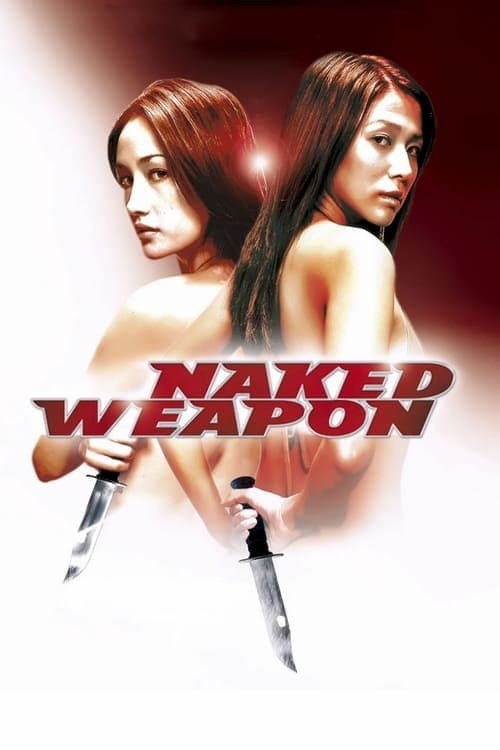
View On WordPress
#Assassin#cia#female assassin#hong kong#japan#kidnapping#Knife#martial arts#philippines#Revenge#spain#Tokyo#Top Rated Movies
0 notes
Photo



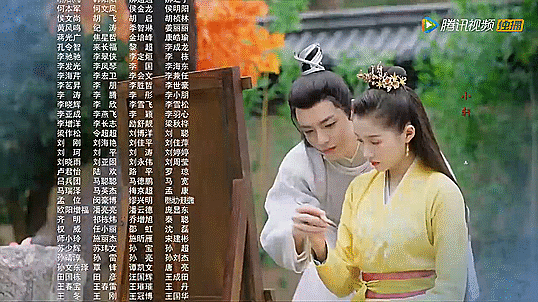
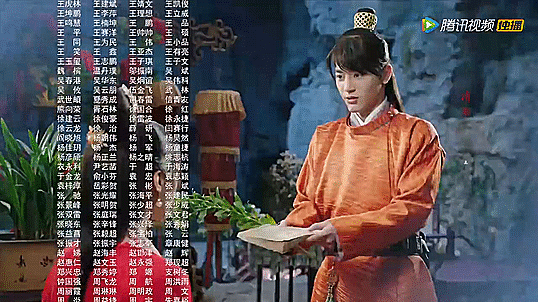


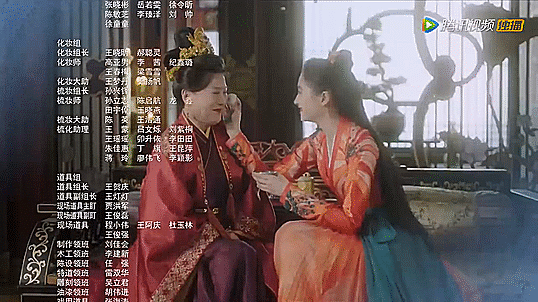


Cdrama: A Girl Like Me (2021)
Gifs of Ending of cdrama “A Girl Like Me”
ENG SUB 【我就是这般女子 A Girl Like Me】 EP01 班婳被谢启临退婚 (关晓彤、侯明昊)
Watch this video on Youtube: https://www.youtube.com/watch?v=va9xBIGI5Ds


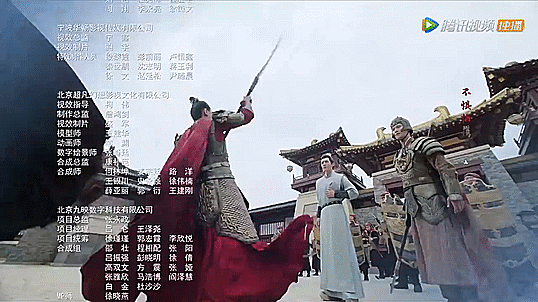
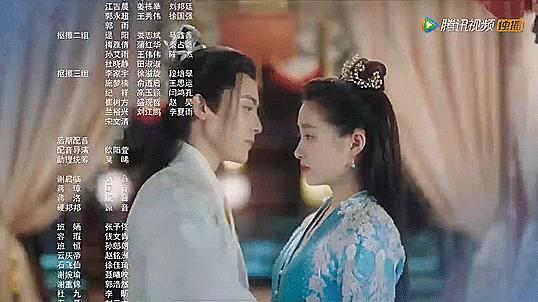

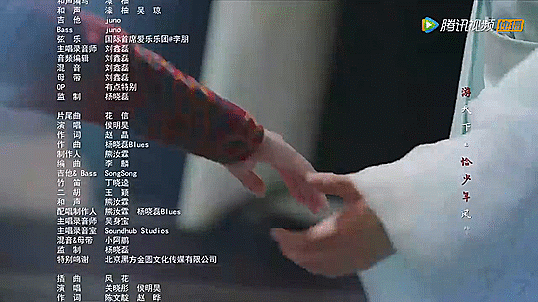

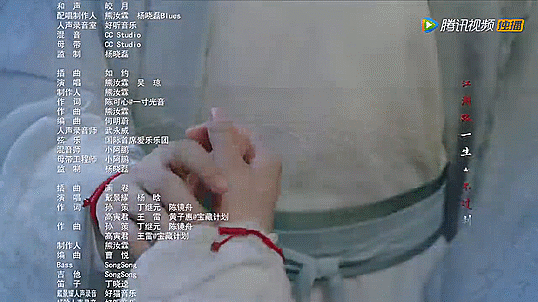
#A Girl Like Me#我就是这般女子#Wo Jiu Shi Zhe Ban Nu Zi#2021#Tencent#youtube#episode 1#WeTV#cdrama#chinese drama#Guan Xiao Tong#Traey Miley#Hou Ming Hao#Neo Hou#Xiao Hou Zi#Zhao Shun Ran#Li Chung Lin#Li Zhong Lin#An Yong Chang#Xia Nan
5 notes
·
View notes
Text
23 books in 2023
I was tagged by no one but I wanted to do this just to see if I end up reading these books by the end of the year. I always oscillate between “I should read my tbr in order from earliest to latest” to “ ooh my library has this fun new book out on their display let me pick it up” so hopefully by making this list I can hold myself somewhat accountable. A lot of these books will be stuff from the beginning of my tbr.
The Count of Monte Crisco by Alexander Dumas
The Priory of the Orange Tree by Samantha Shannon
The Mask of Mirrors by M.A. Carrick
The Prey of Gods by Nicky Dreydan (dnf’ed technically)
The Autobiography of Malcolm X by Alex Haley and Malcolm X
Jade City by Fonda Lee
A Dowry of Blood by S.T. Gibson
The Pariah by Anthony Ryan
The Stardust Thief by Chelsea Abdullah
The City of Brass by S.A. Chakraborty
The Bog People: Iron-Age Man Preserved by Peter Glob
Yume by Sifton Tracey Anipare
The Lies of Locke Lamora by Scott Lynch
Bluebird by Ciel Pierlot
No Exit by Taylor Adams
The Final Strife by Saara El-Arifi
A Magic Steeped in Poison by Judy I. Lin
Hench by Natalie Zina Walschots (also dnf’ed)
Meet Cute Diary by Emery Lee
If On A Winter’s Night A Traveler by Italo Calvino
Binti: The Complete Trilogy by Nnedi Okorafor
Young Mungo by Douglas Stuart
Cursed Bunny by Bora Chung
So update to a post I never got around to posting, I ended up reading 11/23 of the books I wanted to read this year. A lot of these books were new series and about halfway through the year I decided to finish as many of the series I had previously started before starting new ones so some of these are going to be part of my 2024 series read. Hopefully next year I do better on my 24 in 24 list.
0 notes
Text

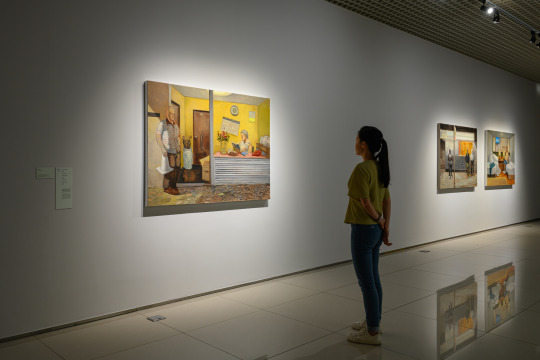
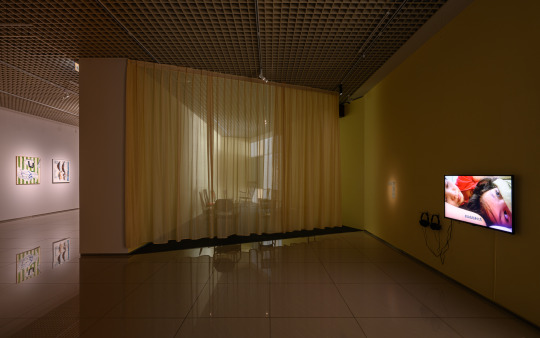
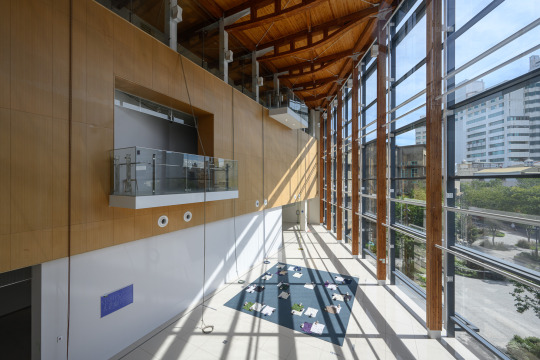



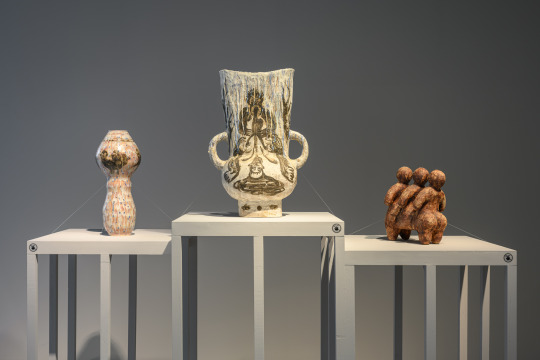



Here is where we meet
Here is where we meet
2023/06/29-10/15
Venue: Chiayi Art Museum 1F-3F
Supervisors:Ministry of Culture, Chiayi City Government
Organizers:Chiayi Art Museum, Tianmei Art Foundation
Collaborators:TKG+, Mind Set Art Center, Each Modern
Curator:Erica Yu-Wen Huang
Artists:Wang Po-Yen, Wu Chuan-Lun, Lin Yi-Hsuan, Lin Ying-Chieh, Chiu Chen-Hung, Chang Chih-Chung, Zhang Xu-Zhan, Chang Cheng-Chun, Chuang Ho, Kuo Yu-Ping, Chen I-Chun, Chen Sung-Chih, Chen Ching-Yuan, Chen Ching-Ming, Huang Chih-Cheng, Liao Chi-Yu, Liu Chih-Hung, Cheng Nung-Hsuan, Jian Yi-Hong, Lo Yi-Chun
Archive Room - Participating Artists:Ding Chien-Chung, Niu Jun-Qiang, Wang Po-Yen, Shih Meng-Hsin, Wu Chuan-Lun, Li Yi-Fan, Li Ting-Huan, Lin Hao-Bai, Lin Yi-Wei, Lin Ying-Chieh, Chiu Chen-Hung, Chiu Chien-Jen, Hung Sheng-Hsiung, Hsu Yin-Ling, Shiu Sheng-Hung, Chang Chih-Chung, Zhang Xu-Zhan, Chang Cheng-Chun, Chang San-Hsueh, Chuang Ho, Kuo I-Chen, Kuo Yu-Ping, Chen I-Chun, Chen Sung-Chih, Chen Kuan-Ying, Chen Fei-Hao, Chen Ching-Yuan, Chen Ching-Ming, Huang Chih-Cheng, Huang Xuan, Yang Han-Chiao, Liao Chi-Yu, Liao Zen-Ping, Liu Chih-Hung, Liu Feng-Ling, Cheng Nung-Hsuan, Ou Jing-Yun, Hsieh Jhou-Yu, Jhong Jiang-Ze, Lo Chan-Peng, Luo Jr-Shin, Lo Yi-Chun
1 note
·
View note
Text

The following are the contents of the article, including a description of the infobox, listed in succession.
(title of infobox in Chinese and Manchu languages)
Chinese Imperial Air Force (English)
中華帝國空軍 (Hanzi)
Chung-hua Ti-kuo K'ung-chün (Wade-Giles, the most widely used Chinese romanization system in this timeline)
(Below is the name in Manchu script, it only renders sideways here)
ᡩᡠᠯᡳᠮᠪᠠᡳ ᡤᡠᡵᡠᠨ ᡳ ᠠᠪᡴᠠᡳ ᠴᠣᠣᡥᠠ (Manchu)
Dulimbai gurun-i Abkai Cooha (Manchu romanization)
Emblem of the Chinese Imperial Air Force:
Symbol consisting of the roundel with a blue-green-white-red dragon flying around the central red sun, vertical red and yellow banners with the name of the air force in white Hanzi and Manchu script, two outspread white bird wings, and the red imperial crown of the Great Qing Emperor
Founded: 10 August 1910; 113 years ago
(as Army Flying Corps)
25 December 1929; 93 years ago
(as current service)
Country: China
Type: Air force
Role:
Aerial warfare
Airborne forces
Air defense
Size: 300,000 active personnel (2023)
4,000+ aircraft (2023)
Part of: Chinese Imperial Military
Headquarters: Peking (this spelling remained popular in the English-speaking world)
Motto(s) 盡忠報國
English: "boundless loyalty to the country"
(the text of Yue Fei's famous tattoo)
Colors: Blue, yellow, red
(a medium cerulean blue, a slightly warm yellow, and a bright cherry red)
March:
Quick: Dragon Aviators' March
Slow: Five Thousand Years
Anniversaries: Air Force Day (14 August)
Aviation Day (10 August)
List of Engagements:
Late Kuang-hsü Crisis
(Second Canton Revolt)
(Wu-ch'ang Rebellion)
(Hatchet Gang Rebellion)
Sino-German War
First World War
Russian Civil War
(West Siberian Intervention)
Warlord Era
(Imperial Protection War)
(Yün-Kwei War)
(Southern Expedition)
(Sinkiang Campaign)
Outer Mongolia Insurgency
Second Sino-Japanese War
Second World War
Chinese Civil War
(Tai-wan Strait Crisis)
Korean War
(Yalu-Tumen Intervention)
Sino-Indian War
(Battle of Bhutan)
Tibet Uprising (1959)
(Operation Wind Shadow)
Third Indochina War
(Operation Phoenix Eye)
Spratly Islands Conflict
Indonesia-Malaya War
(Operation Celestial Spear)
Uzbekistan War
(Operation Black Tortoise)
Website: (Official website link)
Commanders:
Commander-in-Chief: Jui-wen Emperor (era name 睿文, means "Forward-thinking culture")
Director of the IDC: Li Kuo-t'ai
Minister of War: Marshal Fan Sung-yün
Chief of the Air Staff: Marshal Wei Chao-lin
Insignia:
Roundel: Concentric circles of blue, yellow, and red, with a thin ring of blue on the outside, a large area of yellow inside it, and a small red circle at the center
Fin flash: high visibility, Blue-Yellow-Red tricolor, low visibility yellow and red alone.
Ensign: Black Ensign with Qing imperial flag in the canton. In the black field are depictions in white of the Little Dipper and the North Star, arranged in an arc from the middle fly to the lower hoist. The black field represents the night sky and commemorates the air force's famous night raids during World War II.
Aircraft flown:
Bomber: Hsi-an JH-7, H-6
Electronic warfare: Russo-Balt RB-154,
Shan-hsi Y-8, Shan-hsi Y-9, J-16D
Fighter: Chʻêng-tu J-7, Mukden J-8, Chʻêng-tu J-10, Mukden J-11, Mukden J-16, Chʻêng-tu J-20, Samara Sa-27, Sa-30MKK, Sa-35S
Helicopter: Harbin Z-8, Harbin Z-9
Attack helicopter: Harbin Z-19, CAIC Z-10
Utility helicopter: Harbin Z-20
Interceptor: Mukden J-8
Trainer: K'un-lun L-15, K'un-lun JL-8, JL-9
Transport: Hsi-an Y-20, Shan-hsi Y-9, Shan-hsi Y-8, Hsi-an Y-7, Zhukovsky Zh-76
Tanker: H-6U, Zh-78
Chinese name in various transcriptions used in this world:
Traditional Chinese 中華帝國空軍 (used on the mainland)
Simplified Chinese 中华帝国空军 (used on Tai-wan)
Literal meaning: Chinese Imperial Air Force
Bopomofo: ㄓㄨㄥ ㄏㄨㄚˋ
ㄉㄧˇ ㄍㄨㄛˇ ㄎㄨㄥ ㄐㄩㄣ
Wade–Giles: Chung-hua Ti-kuo K'ung-chün
Cantonese Jyutping: Zung-waa dai-gwok Hong-gwan
(Below is the separate box for further reading on the Qing military that accompanies the main infobox in most such articles)
Armed Forces of the
Great Ch'ing Empire
Octagonal symbol known as "the Eight Corners" containing the colors of all the Eight Banners arranged to resemble the character 卐 (Wan, important to state-sponsored Vajrayana religion)
Executive departments:
Imperial Defence Council
Ministry of War
Staff:
Director of the IDC
General Staff of the Military
Works Department of the IDC
Censorate of the IDC
Services:
Chinese Imperial Military
Army
Navy
Air Force
Strategic Support
Independent troops:
Military Police Force
T'uan-lien Militia
Pao-chia Guards
Eight Banners
Special operations force:
Special Operations Department
Special Police Unit of the MPF
Snow Leopard Commando Unit
Mountain Eagle Commando Unit
Other troops:
CIM Joint Logistics Support Force
Military districts:
Eastern Theater Command
Southern Theater Command
Western Theater Command
Northern Theater Command
Central Theater Command
History of the Chinese military
Military history of China
Military ranks of China
Ranks of the Imperial Army
Ranks of the Imperial Navy
Ranks of the Imperial Air Force
(Main body of the article below here)
The Chinese Imperial Air Force (CIAF; Chinese: 中華帝國空軍; Wade–Giles: Chung-hua Ti-kuo K'ung-chün), also referred to as the Chinese Air Force (中華空軍) or the Imperial Air Force (帝國空軍), is the principal aerial service of the Great Ch'ing Empire, a part of the Chinese Imperial Military along with the Imperial Navy and the Imperial Army. The CIAF was officially established on 25 December 1929 and it is composed of five branches: aviation, ground-based air defense, radar, Airborne Corps and other support elements.
The development of the CIAF began with the creation of the Pei-yang Army Flying Corps in 1910, which flew French biplanes in reconaissance and bombing operations against rebels. With the splintering of the Pei-yang Army in 1916, elements of the Flying Corps entered the service of the various warlords vying for control of the government. During the First World War, ten bombers were shipped to Shang-hai for the Peking Government's use in dislodging the German Navy from Kiautschou Bay. The Flying Corps would participate in the Southern Expedition using primarily the Avro Avenger fighter aircraft and the Avro Aldershot heavy bomber provided by the United Kingdom, and in 1929, with the warlords brought together or defeated, the Air Staff was created as a separate branch of the military. The UK also assisted with the expansion of the Chinese aerospace industry during the Second Sino-Japanese War. Changes in the organization of the CIAF followed by modernization programs in the 1980s and increased technology development in the 21st century resulted in the J-20 stealth multirole fighter, the first of its kind for China.
The Air Force's mission is to secure the objectives of the Imperial Defence Council which are to "provide necessary security and defense of the Empire and to support the Government's international obligations". The highest-ranking military officer in the Air Force is the Chief of the Air Staff, who exercises supervision over Air Force units, while the IDC assigns Air Force components to unified combatant commands. Some units are also ceremonially affiliated with the Eight Banners, but since 1931 have been functionally integrated into the civilian command structure. The Helicopter Command contains most of the rotary-wing aircraft of the CIAF. Most of the air force is based in Mainland China, but some units do serve on foreign operations (principally over Manipur and Bukhara) or at long-established foreign bases (Havana, Ream, Djibouti, and Gorno-Badakhshan). Although the CIAF is the principal Chinese air power arm, the Imperial Navy's Fleet Air Corps and the Army Air Corps also operate armed aircraft.
Contents:
1 History
1.1 Origins
1.2 Warlord Era and Yüan Ch'en
1.3 First United Front
1.4 Second Sino-Japanese War
1.5 Chinese Civil War
1.6 Korean War to the Sino-Russian Split
1.7 1970s to 1980s
1.8 P'ing-hsiang era (平祥, Peaceful and Auspicious)
1.9 Jui-wen era
2 Personnel
2.1 Ranks and insignia
2.2 Commanders
3 Structure
3.1 Senior leadership
3.2 Headquarters
3.3 Commands
3.3.1 Transport command
3.3.2 Long-range command
3.3.3 Expeditionary command
3.3.4 Training and research
3.4 Order of battle
3.5 Airbases
3.6 Aerobatic display team
4 Aircraft
4.1 Combat air
4.2 Intelligence
4.3 Maritime patrol
4.4 Helicopters
4.5 Training aircraft
4.6 Advanced jet training
5 See also
6 References
6.1 Citations
6.2 Sources
7 Further reading
8 External links
History:
(Further information: link to page "Aviation in China")
Origins:
Today's Chinese Imperial Air Force (CIAF) traces its roots back to August 10, 1910 when the government authorized the creation of the Army Flying Corps in an effort to improve intelligence and gain the upper hand on insurrections. On the same day, construction began on Peking Nan-yüan Airport as part of a program to modernize national infrastructure. Initiated in the wake of the Boxer Protocol in 1901, the Keng-tzu New Policies were ordered by the Empress Dowager Tz'ŭ-hsi to reform government bureaucracy along with the military, and by the start of the Hsuan-t'ung reign a group of preparatory departments had been organized for experimentation with new technology and administrative systems. In 1903 an imperial edict expanded the Wu-wei Corps to 36 divisions, creating the Pei-yang Army, in 1905 the Imperial Examinations were abolished, and in 1907 a new law code and judicial system were rolled out. That same year, the tax code was reformed and the rail system was nationalized, which greatly helped the empire's finances but caused significant unrest as well.
With the death of Jung-lu in 1903, General of the Right Division Yüan Shih-k'ai became commander of the Pei-yang Army. His role in the 1898 coup d'état against the Kuang-hsü Emperor made him many enemies, and when the empress dowager and the emperor died within a day of each other in 1909, he was forced to resign by Prince Ch'ün and return to his home village ostensibly for health reasons. In spite of this, Yüan remained in communication with his associates in the army. In the wake of the February 1910 Keng-hsü Army Uprising, he authorized the Pei-yang Army to found a flight school at Nan-yüan to train a group of eight pilots to fly reconnaisance using Cauldron Type D biplanes purchased from France, improving the army's ability to respond. In early 1911, the Aviation Research Institute was founded.[6]
Warlord Era and Yüan Ch'en:
(Photo labeled "Nan-yüan Air Force Academy drillmasters in front of Avro aircraft")
(Photo labeled "Voisin V in Shang-hai")
In 1911, a major popular uprising began in Canton while another army mutiny occurred at Wu-ch'ang. In a panic, Empress Dowager Lung-yü convinced Yüan to come out of retirement and lead the war effort in exchange for the position of Prime Minister and the final adoption of the Hsuan-t'ung Constitution. The rebellion was crushed by the end of 1912, and the T'ung-meng-hui (TMH) revolutionary society was forced to flee to Japan once again with numerous dead. With the south pacified, Yüan feared he would no longer be of use to the Ch'ing court. In spite of the bureaucrats' protests, he brought his army into the capital in order to protect himself and his allies from execution, essentially holding the court hostage. For five years, he and his majority Han chinese cabinet ruled the country.
Reasoning that China desired a new Han-ruled dynasty, Yüan revised the constitution to make himself a dictator before announcing plans to seize the throne as the Hung-hsien Emperor of Great Ch'en, allowing his army to plunder Manchu estates as northern Chinese cities descended into racial violence. The Ch'ing court fled to Gan-su, where support for Han rule was lower, under the protection of Ma An-liang and Shaan-hsi governor Ch'ien Neng-hsün. With the divided country now in civil war, many of Yüan's closest supporters abandoned him, and the solidarity of his Beiyang clique of military protégés dissolved. The Hung-hsien Emperor was opposed by not only the Ch'ing and the minorities, but far more importantly by his subordinate military commanders, who believed that his usurpation would allow him to rule without depending on the support of the military.
A coalition of governors and officers led by An-hui governor Liang Tun-yen launched the Imperial Protection War against him, officially in the name of the Hsuan-t'ung Emperor, while the Air Corps rebelled as well and dropped bombs on the Forbidden City. Yüan's health continued to decline, and his death in 1916 paved the way for the return of K'ang Yu-wei and other anti-Yüan reformist exiles. The Prince Ch'ing Cabinet retook control of the capital, denouncing Yüan and purging his allies, while government authority was greatly damaged. Provinces broke away and the TMH returned in 1917 to start a Han-nationalist insurgency in Hunan.
The fall of Yüan Shih-k'ai created a power vacuum and fractured the army. Fearing for their lives, many of the southern Pei-yang generals revolted and took control of the provinces as military governors. Minister of War Wang Shih-chen, nominally in charge of the Pei-yang Army, abolished it and reorganized the loyalist forces into the Chinese Imperial Military. Expanding the airbases at Nan-yüan and Ta hsiao-ch'ang, Marshal Wang was able to acquire more machines from Britain and France when the new army attacked the German Leased Territory of Kiautschou Bay in 1917 and China was drawn into the First World War.
As part of the allied Operation Asher, ten Voisin V pusher bombers were produced in France and shipped to Shang-hai. In spite of having defeated the 1914 allied attack, by this time the garrison was low on supplies and the Chinese aircraft proved devastating to German morale during the Second Siege of Tsing-tao. An avid aviation enthusiast, the Hsuan-tung Emperor himself also took great interest in the development of the Air Corps, and when he assumed direct rule in 1924 he personally invested large amounts of his constitutional subsidy into it.
First United Front:
During the late 1920s, the Ch'ing Imperial Government formed the first united front with the liberal T'ung-meng Hui (TMH) party against competing warlords in a bid to reunite a fractionalized China, combining the liberal Wu-han Government with the Imperial Assembly. In this period, various airplanes were purchased and deployed by warlords in their struggle for power until nominal Chinese reunification in 1929 following the Southern Expedition which saw the use of Avro Aldershot heavy bombers to inflict serious damage on the infrastructure of several provinces in support of the government offensives. That year, the CIAF was designated as an independent branch of the armed forces. The eighteen graduate pilots of the military flight school included nine republican and nine monarchist pilots who were sent to the Russian Federation for two years of advanced flight training under the tutelage of the more experienced Russian Air Force. Two of the imperial graduates, Kuo Tzu-han and Sung Chien-yü, continued to serve in the Russian Air Force for five years until, in September 1928, they returned to Ti-hua as instructors.
At the same time, Tsai-chen the fifth Prince Ch'ing established the Bureau of Aeronautics in 1920. Subsequently, the organization continued to develop, and successively established an aircraft factory, an aviation command, and a new aviation school in Hsi-an. In May 1927, the Aviation Department of the Ministry of War was changed to the Aviation Committee of the Defense Council of the Imperial Government. By 1929, the government's aviation force was officially independent from the Army General Command and became an independent service.
Second Sino-Japanese War:
(Photo labelled "Self-developed Chinese transport aircraft during the Battle of Ch'ang-sha")
Following the abolition of many of their social privileges in the Hsin-wei Reform Act, many Banner families experienced poverty and violence. In response to perceived neglect, they became disaffected with the Hsuan-t'ung Emperor. Some sided with the northeastern Pei-yang Army generals of the Fêng-tʻien Clique, while some sought support from Imperial Japan.
A minor dispute known as the Wan-pao-shan incident between Han and Korean farmers occurred on July 1, 1931. The issue was highly sensationalized in the Imperial Japanese and Korean press, and used for considerable propaganda effect to increase anti-Chinese sentiment in the Empire of Japan. Believing that a conflict in Manchuria would be in the best interests of Japan, Kwantung Army Colonel Seishirō Itagaki devised a plan to provoke Japan into invading Manchuria by setting up a false flag incident for the pretext of invasion. The Independent Garrison Unit of the 29th Infantry Regiment (which guarded the South Manchuria Railway) placed explosives near the tracks, but far enough away to do no real damage.
On the morning of September 19, two artillery pieces installed at the Mukden officers' club opened fire on the Chinese garrison nearby, in response to the alleged Chinese attack on the railway. Chang Hsueh-liang's small air force was destroyed, and his soldiers fled their destroyed Pei-ta-ying barracks, as five hundred Japanese troops attacked the Chinese garrison of around seven thousand. The Chinese troops were no match for the experienced Japanese troops. By the evening, the fighting was over, and the Japanese had occupied Mukden at the cost of five hundred Chinese lives and only two Japanese lives, thus starting the greater invasion of Manchuria. By 1932, most of the region was under Japanese control and the Empire of Manchukuo was created, while a young member of the Hitara clan was enthroned in Ch'ang-ch'un as the K'ang-te Emperor.
The CIAF immediately dispatched combat aircraft to the Hung-ch'iao Aerodrome during the January 28th Incident of 1932, and aerial skirmishes occurred for the first time between China and the Imperial Japanese. In February 1932, US Reserve Lt. Robert McCawley Short, who was transporting armed Chinese aircraft, shot down an IJN aircraft on February 19, 1932, and downed another on February 22 before he was killed (he was posthumously raised to the rank of colonel in the CIAF). During the early days of China's war of resistance against the Japanese invasion, the Imperial Air Force participated in several battles, including attacking Imperial Japanese Navy warships along the Yangtze River and supporting the Battle of Shang-hai. By this time, the Imperial Air Force's main fighter models were the Curtiss Hawk II and Hawk III fighters. On August 14, 1937, Japanese Imperial Navy bombers bombed Hang-chou Chien-ch'iao Airport, but was defeated by the CIAF; therefore, August 14 was designated as Air Force Day by the Imperial Government. In May 1938, the CIAF dispatched two B-10 bombers to Japan to drop leaflets.
By the middle of the war, intelligence units of the Imperial Japanese Navy cracked the radio codes of the Chinese army, putting the Air Force under attack. In the middle and late stages of the Second Sino-Japanese War, the addition of Chennault and other foreign pilots, as well as the support provided by the United States after joining the Allies, restructured the combat power of the CIAF and participated in the Hsin-chu Air Attack, and air raids on Japan. After the end of World War II, in June 1946, the Aviation Committee of the Military Committee of the Imperial Government was changed to the General Command of the Air Force.
Chinese Civil War:
In January 1941, as intensifying clashes between imperial and TMH forces ended the second united front against invading Japanese forces, the government's Imperial Defense Council (IDC) established the Air Force Engineering School with Kuo as commandant and Sung as head instructor. In May 1944, just over a year before the Japanese surrender to Allied forces, the IDC established an Aviation Section in Hsi-an with Kuo as its director and Sung as deputy director. Two years later in May 1946 and after the withdrawal of Japanese troops, the IDC established the Northeast Old Aviation School in Kirin. By 1949 the Aviation Section of the IDC had 560 trained personnel (125 pilots and 435 ground support specialists), purchased 435 aircraft from the Russian Federation, acquired 115 republican aircraft, and operated seven military flight schools.
During the Second Civil War between the T'ung-meng Hui and the Imperial Government from 1946 to 1949, the Air Corps of the Republic of China participated in combat support and air strikes against the CIAF on the mainland and around the Tai-wan Strait. In October of the same year, the ACROC assisted in stopping the advance of the Chinese Imperial Army at the Battle of Ku-ning-t'ou in Quemoy, and in April 1949, the Air Corps retreated to the former Japanese colony of Tai-wan along with other government departments of the ROC. In October 1952, Marshal Chou Ên-lai and the battle-hardened army of the Chinese Communist Party broke with the T'ung-meng Hui and launched a successful revolution with the help of Indigenous Taiwanese, abolishing the National Assembly of the TMH and founding the People's Republic of China; the world's second socialist state after India. The ACROC sided with the revolution and became the PRCAAF. As relations soured between the left liberal governments of NATO and the right authoritarian governments of the Eurasian Pact, the United States intervened on behalf of the PRC and preserved the island's self-government. There have been at least 11 air battles in the area since 1952.
The real opportunity to obtain a large number of aircraft came from the Northeast Alliance Aviation School established in 1946 after the end of the Anti-Japanese War. At this time, the Imperial Government seized Japanese-made aircraft, trained pilots, and received a large number of American-made aircraft from the surrendered ROC Air Force in southeast China and Nanking during the civil war. On March 17, 1949, personnel were transferred from the Northeast Aviation School to establish the "Imperial Defence Council Aviation Bureau" in Peking. The director Ch'ang Ch'ien-k'un (the executive vice president of the Northeast Aviation School), under the Combat Education Department, Aeronautical Engineering Department, Civil Aviation Department, Information Section and Supply Section, staffed 64 people. In May 1949, the Navigation Management Office, the Secretariat, and the Imperial Office were added, and the number was expanded to 172 people. The major military regions have since successively established aviation divisions.
(end of finished part of article)
#China#alternate history#Qing#Cixi#Guangxu#Sun Yat Sen#Wade Giles#Manchu#Xuantong#East Asia#russian civil war#bolshevism#Zhou Enlai#Yuan Shikai#Xinhai#Taiwan#history#aviation
0 notes
Text
Das letzte Wort: Explosionsartige Zunahme schwerer Augenerkrankungen durch COVID-19 Shots – vom Erblinden bis zur dauerhaften Sehstörung
ScienceFiles:»Begonnen hat alles mit dem Beitrag von Li et al. (2023), in dem die Autoren ein doppeltes Risiko für mRNA-Geimpfte einen Gefäßverschluss in der Netzhaut zu erleiden, belegen. Li, Jing-Xing, Yu-Hsun Wang, Henry Bair, Shu-Bai Hsu, Connie Chen, James Cheng-Chung Wei, and Chun-Ju Lin (2023). Risk assessment of retinal vascular occlusion after COVID-19 vaccination. npj […] http://dlvr.it/SpTR4T «
0 notes